As urban environments continue to grow and evolve, the disconnect between people and nature often widens, leading to a sense of isolation in our bustling cities. Integrating greenhouses into existing buildings offers a compelling solution to bridge this gap. By transforming rooftops into thriving ecosystems, urban greenhouses foster a sense of community, encourage sustainable practices, and promote mental well-being within the urban fabric.
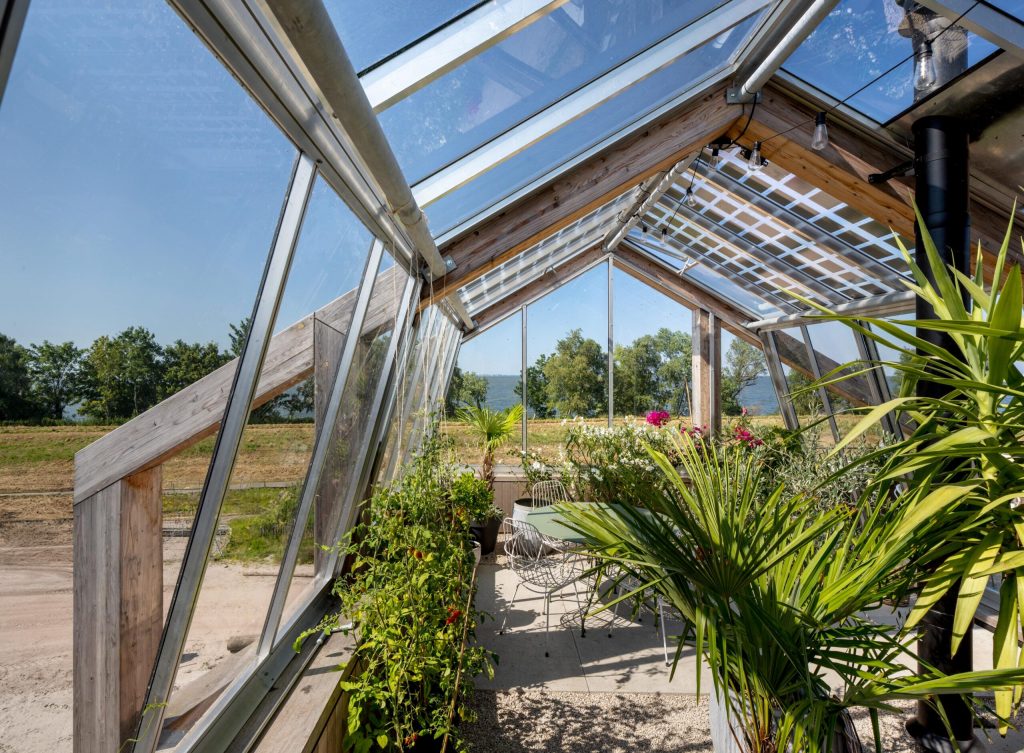
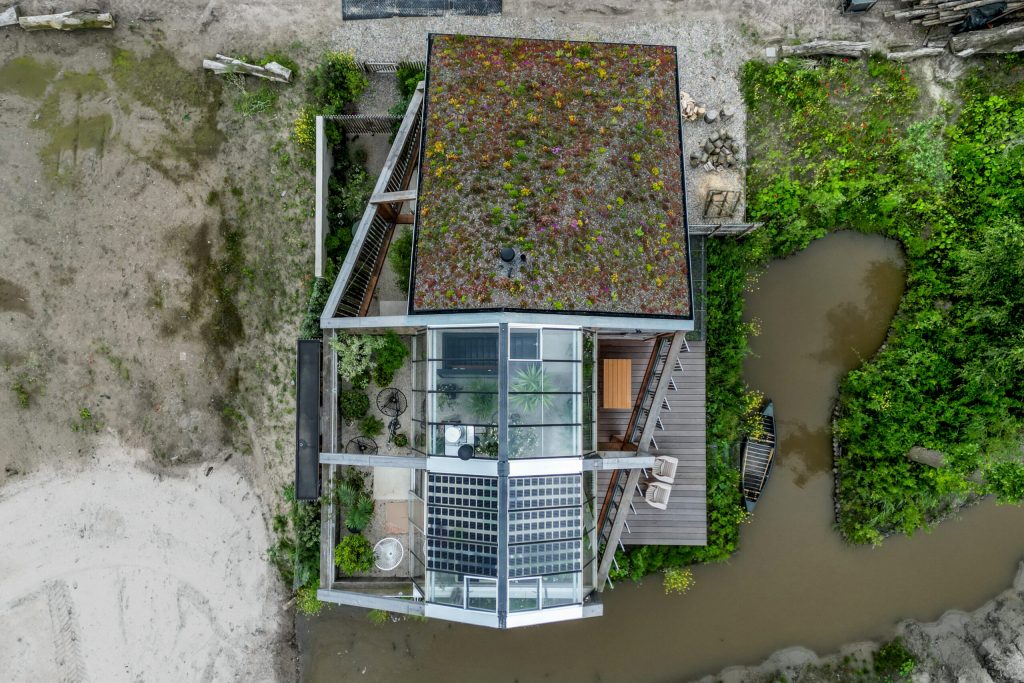
Wooden House by Moke Architekten (also header image)
A greenhouse framed by a wooden pergola crowns this home in Muiden, Netherlands, designed by local studio Moke Architecten. Named Wooden House, the residence is situated in a new residential area, offering stunning views of the nearby lake IJmeer. The clients sought a harmonious balance between open vistas and privacy, which inspired the design of two offset volumes connected by pergolas.
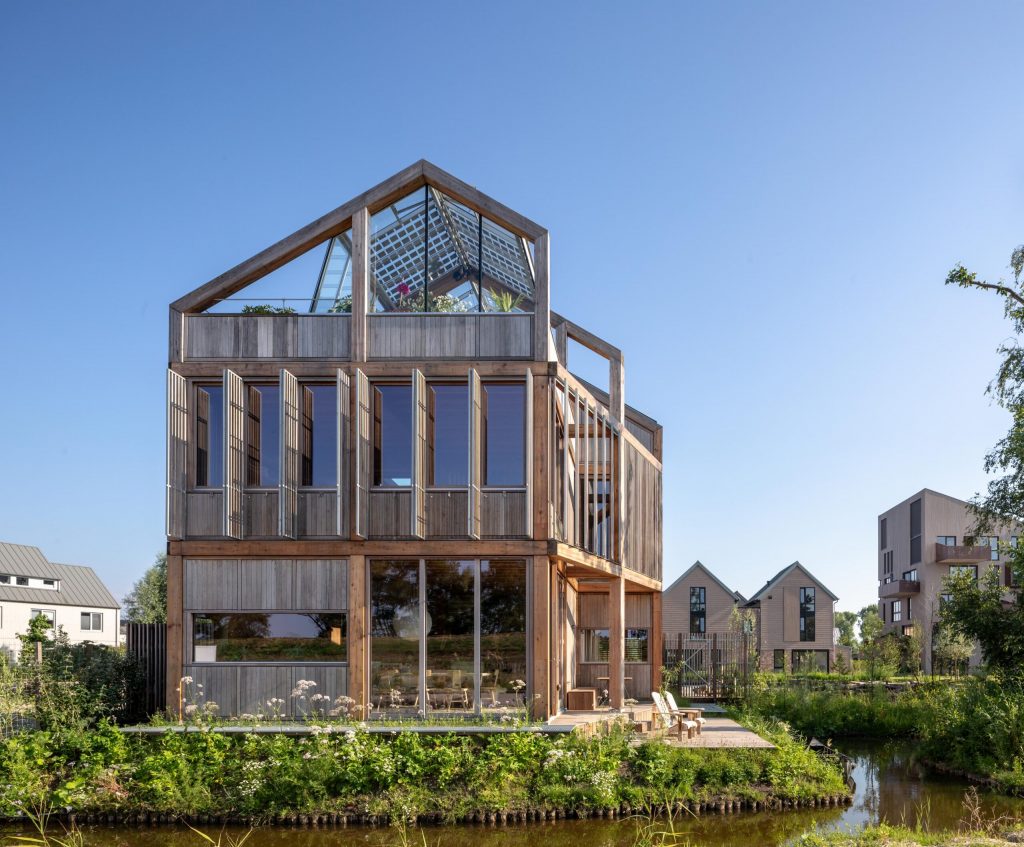
Wooden House by Moke Architekten
The northern volume maximizes the lake views while maintaining seclusion. Here, a ground-floor kitchen and dining area, along with a first-floor living room, are topped by a terrace that is partially enclosed within a greenhouse structure. This innovative space not only enhances the home’s aesthetic but is also equipped with photovoltaic panels, merging functionality with sustainability.
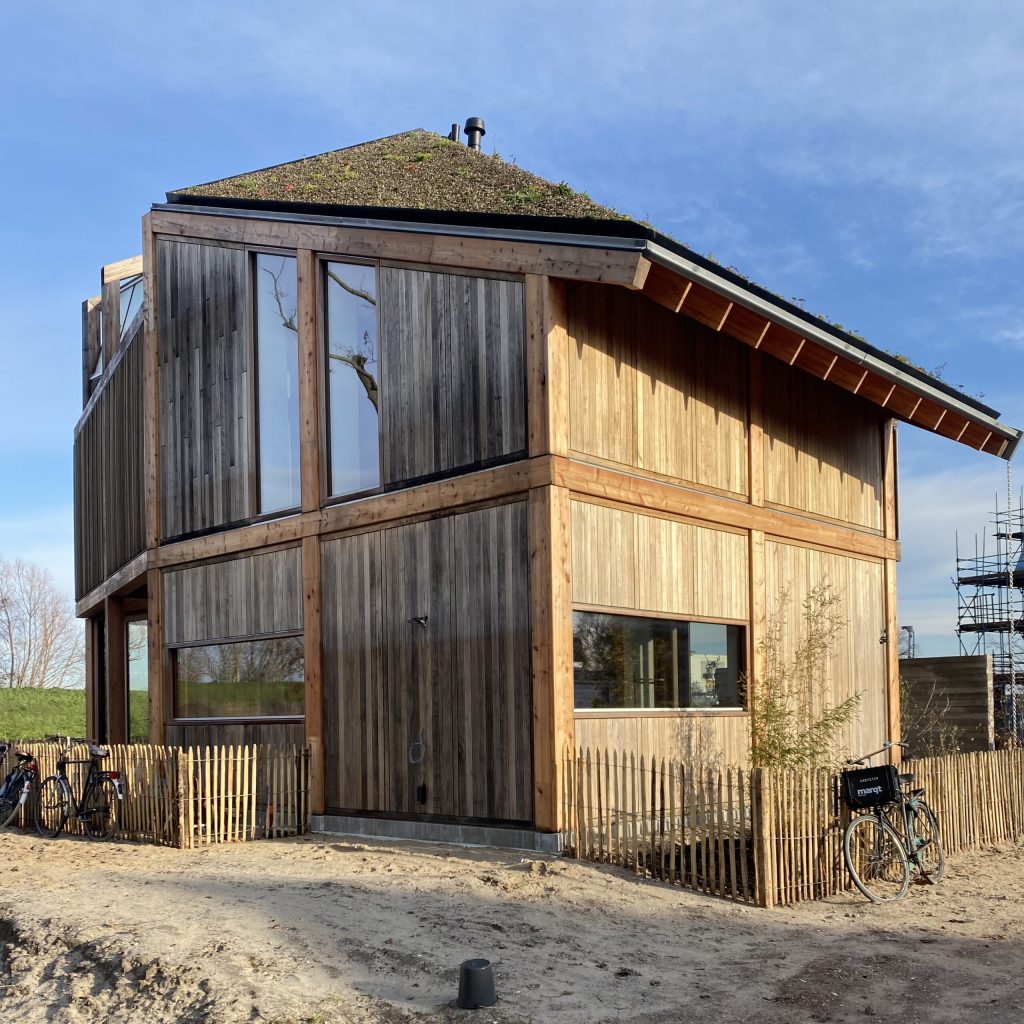

Wooden House by Moke Architekten
In contrast, the southern volume prioritizes privacy, housing a workspace on the ground floor and a bedroom above, all finished with a sloping green roof that seamlessly blends into the landscape. Together, these elements create a dynamic interplay between open spaces and intimate retreats, all centered around the distinctive greenhouse feature.
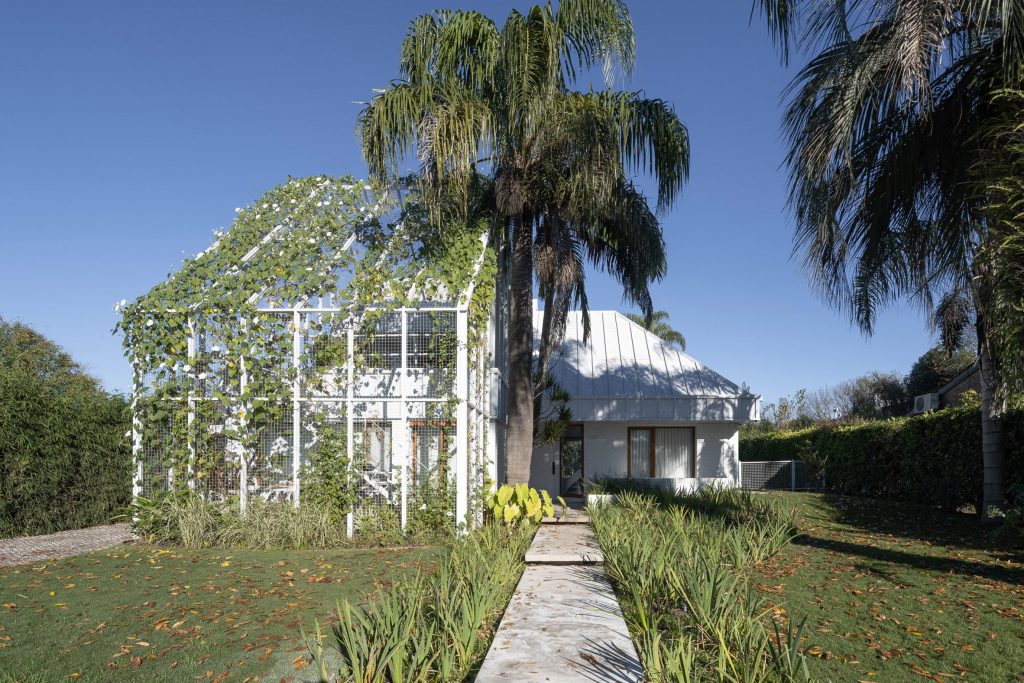
Casa Wiz by BHY Arquitectos
Argentinian studio Bracamonte Hajnal Yerba Arquitectos (BHY Arquitectos) has transformed a 1980s house known as Casa Wiz in Buenos Aires by adding a two-storey gabled greenhouse. Nestled on a grassy lot in Campo Chico, this 205-square metre home now beautifully integrates nature into its design, while respecting the language of the existing house.
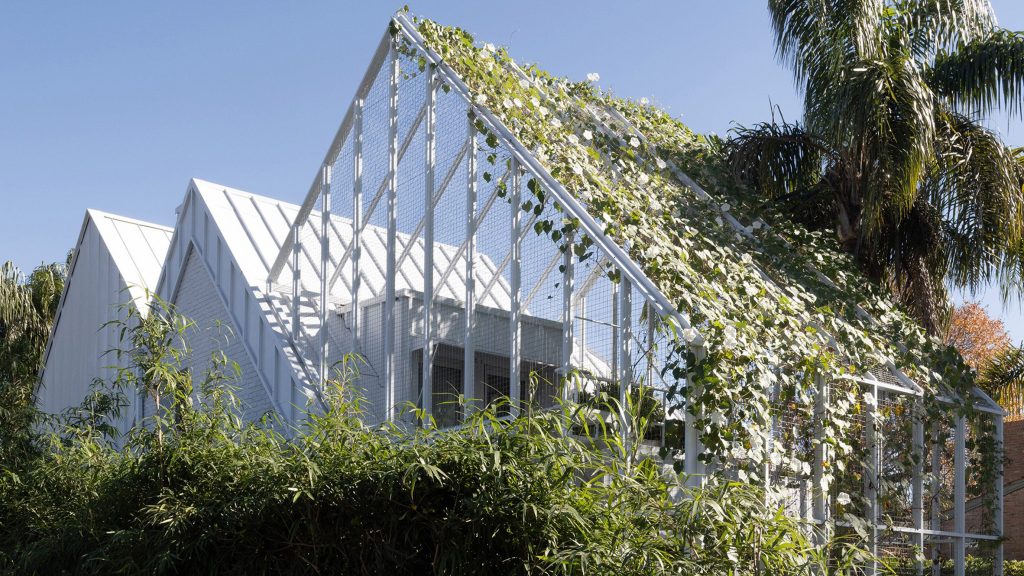
Casa Wiz by BHY Arquitectos
The greenhouse, a key feature of the renovation, serves to create a seamless connection between the old and the new. The design team thoughtfully expanded the upper floor, mirroring the original roofline and introducing garden terrace surrounded by a greenhouse form constructed of a lightweight metal frame. This frame is wrapped in a translucent mesh screen that supports climbing vines, fostering a dynamic, living façade.
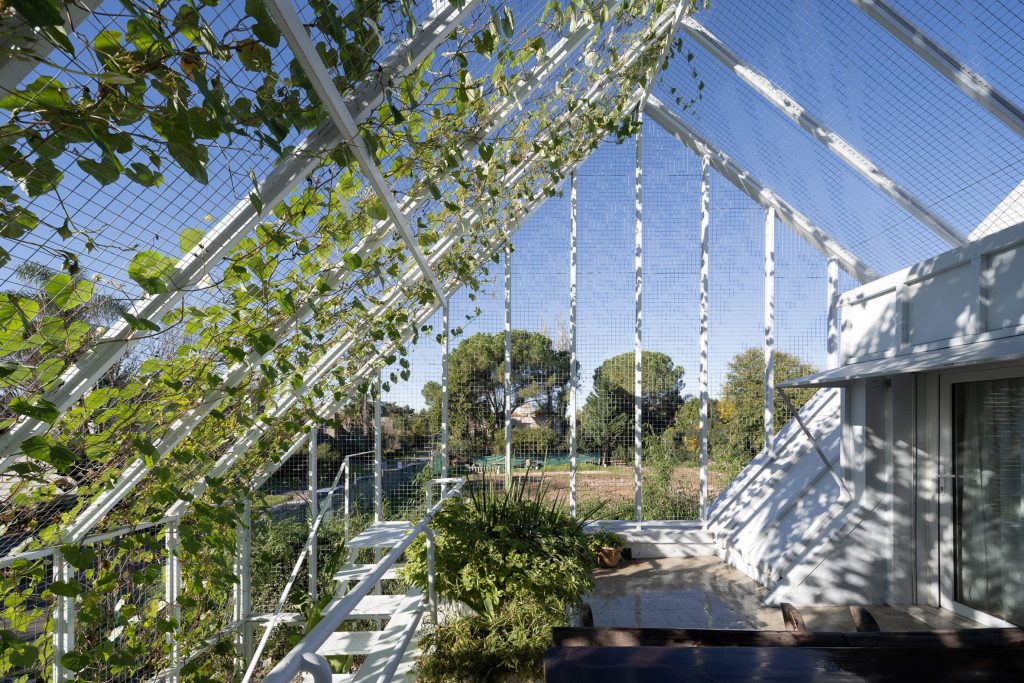
Casa Wiz by BHY Arquitectos
Facing the street, the greenhouse not only offers a visually captivating exterior but also provides a layer of privacy for the home’s interior. This design allows the house to “take refuge behind the translucent structure,” creating a serene retreat. As the vines grow, the outer wall of the greenhouse transforms into a lush “vertical landscape,” blurring the lines between indoor and outdoor spaces.

Casa Wiz by BHY Arquitectos
The upper level of the house is dedicated to the family’s private areas, featuring two smaller bedrooms that open onto the terrace within the greenhouse. A delicate metal staircase inside this vibrant space descends to the children’s playroom below, reminiscent of an inverted treehouse, where nature and playfulness converge. This thoughtful integration of the greenhouse not only enhances the aesthetics but also enriches the living experience in this the compact residence.
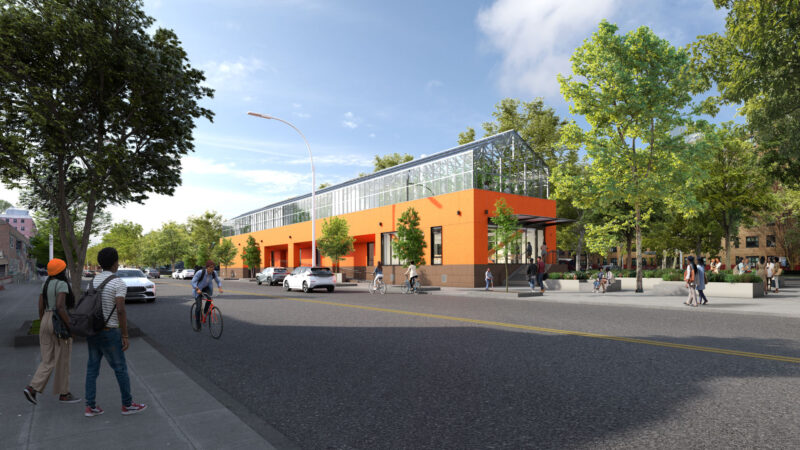
Marlboro Agricultural Education Center by Studio Gang
A massive gabled greenhouse will also top the Marlboro Agricultural Education Center in southern Brooklyn, USA, developed by architecture firm Studio Gang. This 830-square-meter facility aims to introduce a more inclusive food system, transforming a New York City Housing Authority (NYCHA) campus into a vibrant hub for multigenerational education, job training, and community leadership in nutrition and urban agriculture.
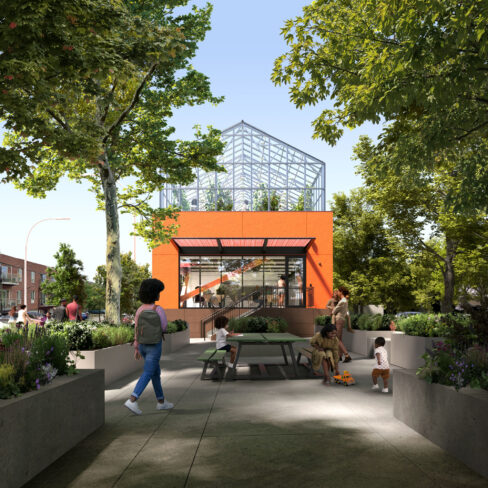
Marlboro Agricultural Education Center by Studio Gang
The greenhouse focused on hydroponics and aquaponics will feature spaces for growing plants and raising fish, while the ground floor will house flexible teaching and community spaces, where visitors can participate in cooking and nutrition programs and access fresh, high-quality produce, as well as a sheltered market to serve the community during winter months. With its bright plaster façade and transparent upper section, the Center harmoniously complements its urban surroundings while radiating warmth and openness that invigorate both the street and campus.
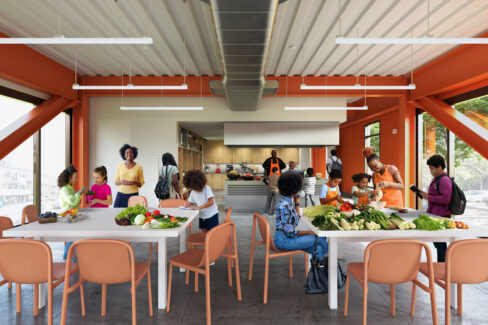

Marlboro Agricultural Education Center by Studio Gang
By introducing density to the site and optimizing its compact design, the building sets a sustainable precedent for structures at the forefront of the food justice movement. Its features include passive heating and cooling, solar access for cultivation, all-electric systems, rainwater storage and reuse, and durable materials. These strategies create a lively environment that supports residents in their collective pursuit of a more equitable future.